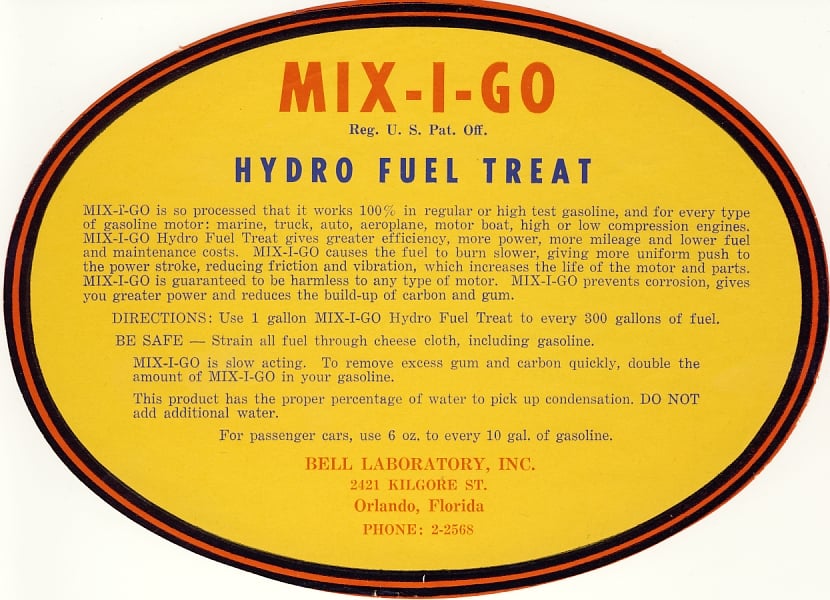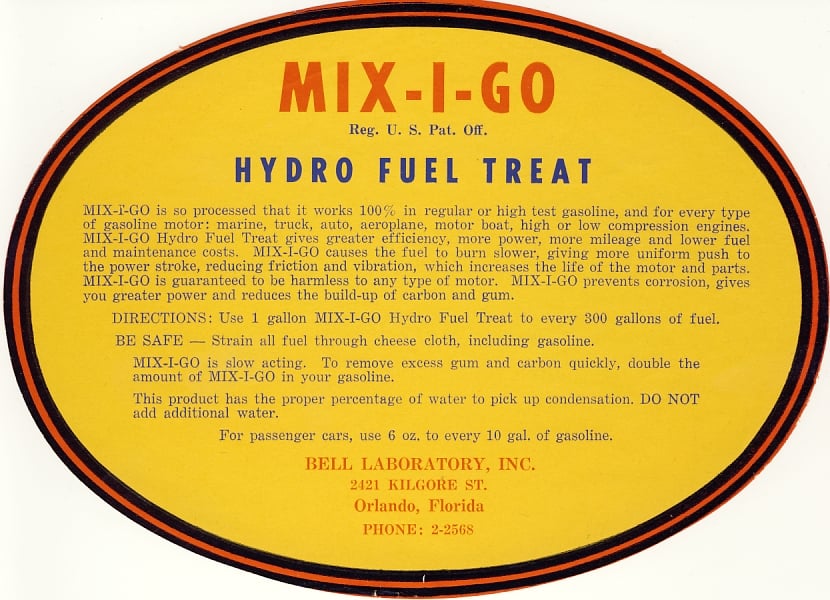The 12 Days of Mix-I-Go: Day #6 - The Faces of Mix-I-Go
Since Mix-I-Go was developed way back in 1927, you might expect its look to have changed a bit over the years.
1 min read
Bell Performance : Dec 20 2011

Back in 1927, Robert Bell figured out how to suspend water in fuel and developed his Mix-I-Go formulation. It wasn't too much later that, of all people, the British Royal Air Force (RAF) came calling to Mr. Bell's doorstep.
 The British were fighting for their lives in World War II against Adolf Hitler's Germany. Military leaders on both sides knew that the war would be won in the air. The epic battles between the German Luftwaffe plans and the British RAF would help to define the Second World War.
The British were fighting for their lives in World War II against Adolf Hitler's Germany. Military leaders on both sides knew that the war would be won in the air. The epic battles between the German Luftwaffe plans and the British RAF would help to define the Second World War.
But the British had a problem - many of their essential bombers and fighter planes were consistently grounded with fuel problems. More specifically, they had water contaminating their fuel and they needed something to cure that problem. Being one of the first in the world to develop this technology, Robert Bell journeyed over to Great Britain with his new formulation and promptly got the RAF planes back in commission and ready to defend their land from the German enemy. And we all know what happened in the end.
Fast forward to the 1980s and Mix-I-Go's outstanding reputation had led it to be used in the fuel of one of the few operational B-17 bombers still around at that time. The B-17 Flying Fortress was a symbol of American power in World War II, being the favorite bombing plane in the Air Force. Its image lives on through the years, being immortalized in famous Hollywood movies like Memphis Belle.
As of 2011, there are only 13 operational models left of the Flying Fortress, and there weren't that many more left back in the 1980s. This particular B-17 was privately owned, based in Fort Worth, Texas, and was actually used in experimental electronics research in WWII. The lead mechanic on the plane, being familiar with the effects of Mix-I-Go, treated his aviation fuel and saw a fuel consumption reduction from 200 gallons per hour down to 170 gallons per hour. The Mix-I-Go fuel treatment also extended spark plug life and made the old engines easier to start.
Now isn't that cool? Mix-I-Go helped turn back the Axis in WWII and kept Flying Fortresses running for years afterward.

Since Mix-I-Go was developed way back in 1927, you might expect its look to have changed a bit over the years.

Many people don't know that you can't just sell anything out on the street and claim it's a fuel additive to put in your car.

We've been hearing about ethanol in our gasoline a lot in the past couple of years, but many people don't realize that ethanol has been used as fuel...